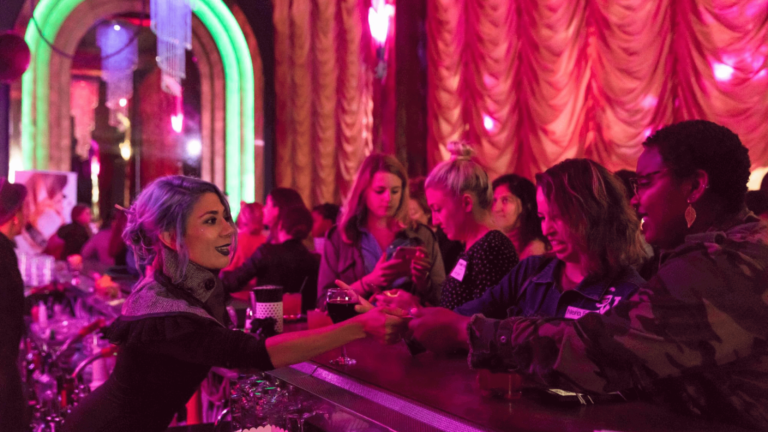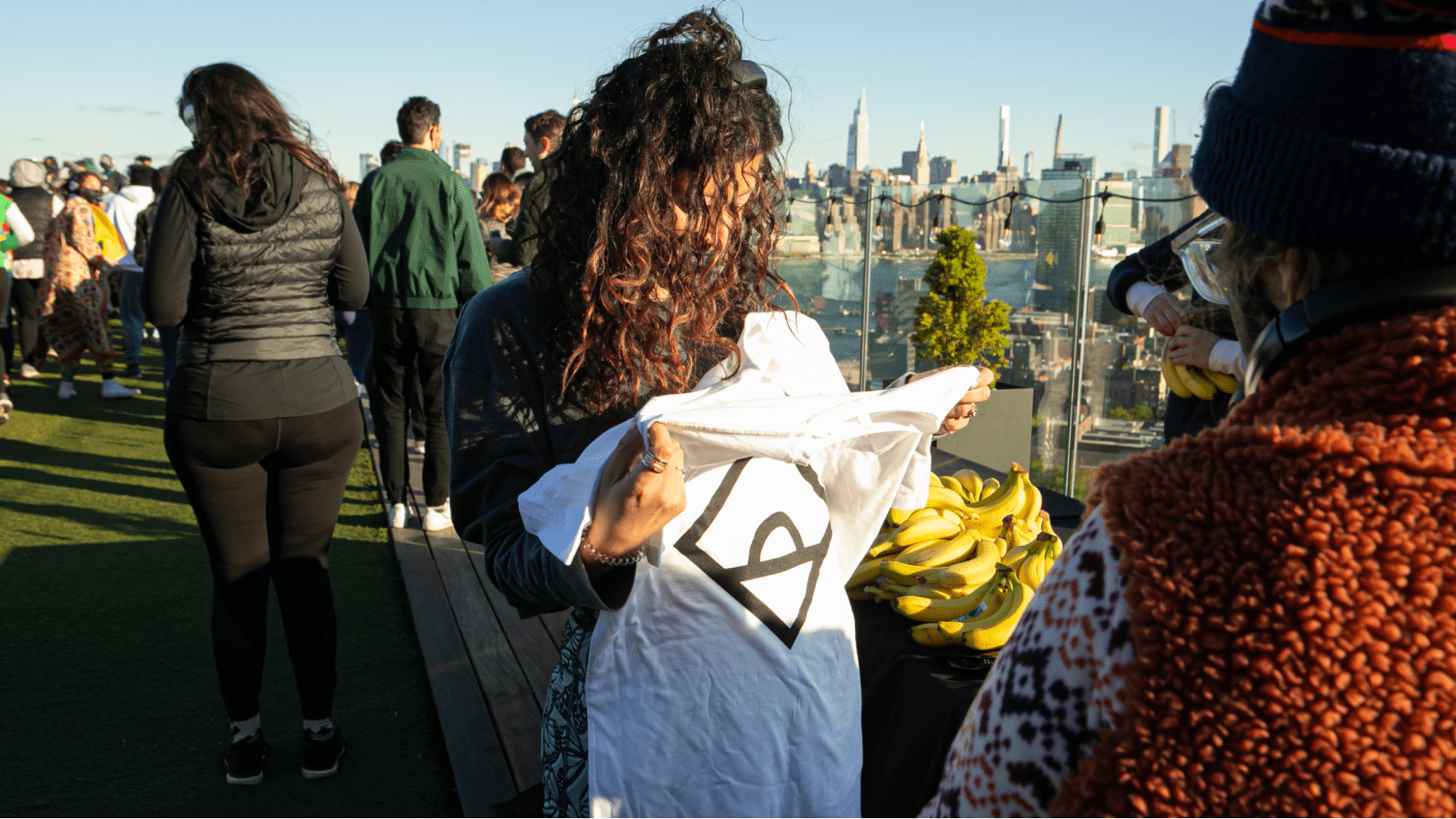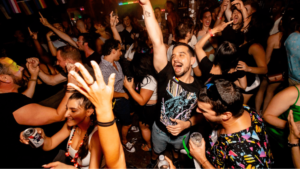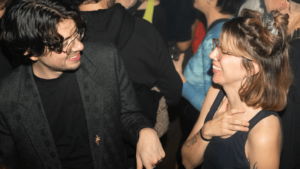Effective event branding is the secret ingredient most event organisers don’t use.
The truth is that branding can help build a loyal community, increase ticket sales, and guarantee recurring attendance. It is also an essential addition to your marketing strategy.
But many event organisers still stick to the same tired ideas when it comes to event branding, missing out on the opportunity to stand out and make a lasting impression.
At Eventbrite, we’ve had a front-row seat to the transformative power of branding. Today, we want to inspire you to create a memorable experience for your attendees and keep them returning time and time again.
Here, we’ll guide you through the process of successful event branding and provide unique ideas and examples from successful event organisers who have succeeded.
Why event branding is about more than your logo
When somebody mentions branding, your mind first goes to a company logo or the event colour scheme on a website. But event branding is so much more than your logo and colours.
Your brand identity is based on the reputation you’ve created for yourself and your business. That reputation is all about a customer’s gut feeling when they see or engage with your brand — which means you’re responsible for influencing your audience’s perceptions to ensure they get the “right” gut feelings.
So, it’s fair to say that impactful event branding should focus on one question: How do you want your attendees to view your brand?
For many event organisers, answering this question is a bit of a journey. But that journey should always start by identifying your brand personality. Develop a persona for your brand, and use that persona to tell your story.
That’s what’ll make you stand out when potential customers are looking for fun events — and if you can create a sense of brand attachment, you’ll sell tickets.
Explore event branding with Eventbrite
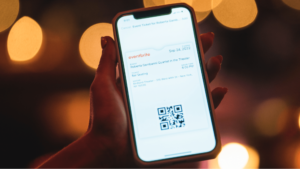
How to effectively create brand attachment
Brand attachment works by creating an emotional connection between you and your audience.
To understand how to create a genuine connection with your potential attendees, it’s worth reading about the connection prominence attachment model (CPAM). It refers to brand attachment as the strength of the connection between the brand and the consumer’s perceived identity.
In short: Brand attachment is about helping customers find themselves in your brand. After all, your community of followers is strongly linked to how your brand is perceived. To help build this attachment, you need to make it easy to interact with your brand, build a community of like-minded individuals, and communicate your brand’s values openly and transparently so people can identify with them through feelings and emotions.
For example, the trend of TikTok products promoting the “clean girl aesthetic” uses particular branding strategies to make it seem like their brand will help a girl FEEL a certain way, like having an ice tray that makes round ice blocks for your ice latte can make you feel like you’re organised, in control, and cool.
@kami.larae How to create the ultimate “that girl” ice drawer… Ice Restock tomorrow! Everything is linked on my Amazön under “DRINKS AND ICE”🧊#ice #icedrawer #thatgirl #fyp #foryou #aesthetic #satisfying #organize #amazonfinds #coffeeice #fruitice #icedcoffee #refill ♬ Aesthetic – Tollan Kim
Ice cubes aside, the branding ideas you choose should represent how you want people to see your brand, and themselves reflected in it.
At Eventbrite, we made it possible to completely customise your event page with contextual advertising that lets you put your brand voice, personality, and design elements front and centre. You’ll get your brand story in front of local eventgoers looking for events — and a community — to connect with.
5 brilliant event branding ideas that’ll help build your community
People want personality and flair — and the more creative (and, sometimes, crazy) your event branding ideas are, the more chances your audience will remember you and bond with your brand.
Before you go crazy, though, make sure you understand precisely who you’re talking to and base your branding around how you want your audience to perceive your brand.
To help fire your creative juices, we’ll show you some clever event branding ideas that successful event organisers use to promote their brands.
1. Create a signature brand
Offer something unique that’s specific to your brand. Think about events with a signature drink — or venues hosting regular themed nights to build an association with their target market and leave attendees wanting to return.
Need a little inspiration? Event organiser BlackOwned Studios + Marketplace cultivates their brand by hosting a monthly Open Mic Night with Cultureville, which brings people together for a cultural event to share music, poems, and spoken word performances. The event praises local performers, which is right at the heart of their brand.
💡Pro tip: Showcase your signature brand offerings and make them easy to find using Eventbrite Collections. With Collections, you can group different events into a single page, so your fans will never miss a show.
2. Build an interactive website
Website branding goes much further than selling your events. It can be an opportunity to create a visual identity that connects with your message. Think of it as an extension of your brand.
You can do this by showcasing your past events, using imagery and video with a common thread, or choosing a typography you feel represents your brand and using it consistently through your website and social media marketing.
Take a look at the event organiser The Emo Fest.
Their well-thought-out website visually represents them as a brand. Their bold, loud, and colourful events are one-of-a-kind — and the vibrant imagery they use online to promote their events validates their position as a hub for wild, nostalgic parties.
💡Pro tip: Want to keep the ticketing process just as immersive? With a ticketing partner like Eventbrite, you can use an embedded display to sell tickets directly on your site without customers having to click through to another site.
It keeps the user journey simple and ensures your branding is always in the front seat.
3. Edit short art films for Instagram reels
Immersive films take users on a journey through the eyes of your brand.
For lessons on best practices, check out event organiser BennyBoy Events.
They’ve developed an urban nightlife style when cutting together promotional videos to promote their wide range of events and shows. The result: They end up sharing event details in the form of high-energy short films instead of dull ads.
By sharing these types of short edits and reels, you can bring your event’s mission to life through dynamic visuals. It also allows you to connect emotionally with your audience and tell your brand story by, for example, showing them some authenticity and taking them through your “behind the scenes” process as you prepare for the big event.
💡Pro tip: Once you’ve created videos that showcase your brand in the best possible way, get in front of more eyes by using them in an ad to promote your future events.
With Eventbrite Marketing Tools, you can craft ads to go alongside your reels and videos to create cost-effective and targeted ads for your brand.
4. Use creative graphic design for event ads
Another simple but effective branding tool is graphic design. Sometimes, establishing your brand visuals is about stopping people dead in their tracks — a striking and eye-catching design is a great way to do that.
Just look at event organiser Release D Riddim. Their creative and consistent branding makes their event ads jump off the screen.
More importantly, they strike the right chord with their target audience. By maintaining this strong aesthetic, they’ve built a bold and edgy reputation their community loves.
💡Pro tip: Your event has a message you want to share, and typography and visuals have the scope to express this. Consider trademark colours and memorable imagery that your attendees will know is you — similar to how you can recognise an artist’s work from another artist.
Using Eventbrite Marketing Tools, you can set up multiple ad campaigns on different platforms using the same artwork — that means you’re being consistent with your cool graphic art. Still, setting up different campaigns only takes a few minutes.
5. Introduce an event mascot
Want to add some brand consistency to your event marketing strategy? Think about getting a mascot.
Mascots create a great atmosphere, brand recognition, personality, and attendee engagement opportunities.
For example, check out the Big Dub Festival. They introduced a pineapple figure as their event mascot that appears on their brand collateral, event merch, and event pages and even makes real-life appearances at the events.
💡Pro tip: When developing a mascot, make sure you choose something your target market identifies with.
This is where it makes sense to conduct a roundtable discussion or set up an online focus group to ask real customers what they think about potential mascots before you unveil your creation to the world.
Use creative event branding ideas to build your community
Increase attendee engagement and connection by incorporating some of the ideas above. Experiment with your website design to make sure it portrays your brand’s message. Check that the visuals you upload to social media also summarise your brand’s personality.
Here at Eventbrite, we understand the importance of effective event branding. We can help you develop and promote any type of event by providing you with the tools and resources you need to create a cohesive and impactful brand identity.
